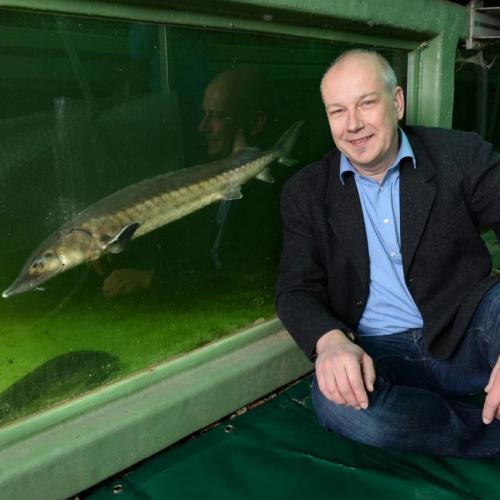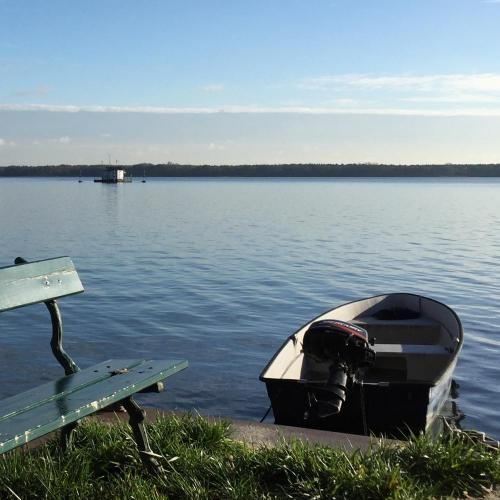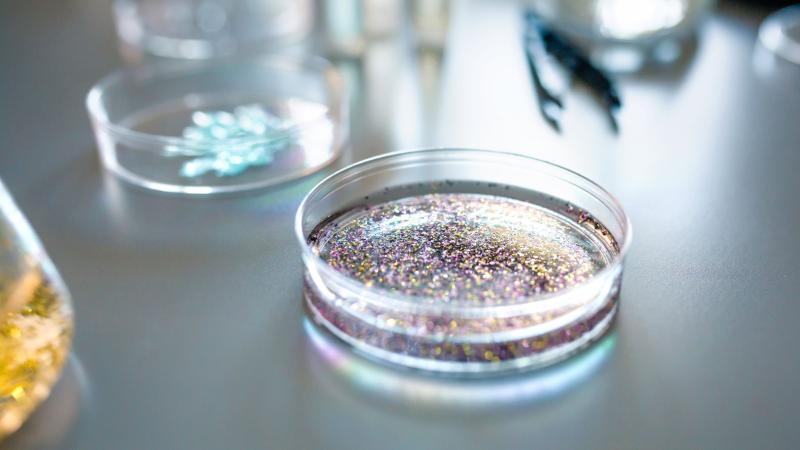In the summer of 2022, toxins produced by the brackish-water alga Prymnesium parvum killed around 1,000 tonnes of fish in the River Oder. | Photo: Luc De Meester
The toxic brackish water algae Prymnesium parvum caused mass mortalities of fish, snails and mussels in the River Oder in the summer of 2022. The toxins responsible, prymnesins, exert their effects in various ways. One possible mode of action of P. parvum involves direct interaction with the cell wall, making it more permeable and disrupting ion exchange. This ultimately leads to cell dissolution. In the worst case, this can lead to the cessation of gas exchange, causing the animals to suffocate. Until this study, little research had been conducted into which species are sensitive to these toxins and how.
Perch and carp particularly sensitive, trout more resistant to the toxin
The researchers investigated the ‘Oder1’ Prymnesium strain, which was isolated during the 2022 algal bloom. They examined its effect on the blood cells of five fish species: rainbow trout, sturgeon, perch, bream and carp. Blood cells were taken from the fish after they had been killed, isolated and incubated with different concentrations of the algae for 24 hours. Haemolytic activity, i.e. the breakdown of blood cells, was determined by measuring the relative contents of intact red blood cells compared to the control group at 15, 18, 21 and 24 hours. "Perch and carp were the most sensitive to the toxin, while rainbow trout were the least sensitive. Such species-specific differences may reflect variations in red blood cell membrane structure and composition, demonstrating the diverse ways in which animals can respond to toxic algal blooms", said Margie Glenn, IGB researcher and first author of the study.
Finding important for evaluating the common analysis method
The findings of this study are ecologically relevant and important for assessing toxic algal blooms. As there is currently no other method available, a haemolysis test on human blood cells is commonly used to assess the toxicity of P. parvum. This study shows that test results can vary considerably depending on the origin of the red blood cells. “Perch and carp blood cells are more sensitive indicators of toxicity than human erythrocytes”, states Dr Jörn Geßner, the IGB researcher who led the study.
Toxicity also depends on environmental conditions
The brackish water alga Prymnesium can produce various toxins depending on the strain, but it is not always toxic. Toxicity is strongly influenced by environmental conditions and nutrient availability. During the 2022 bloom, the algal concentration in the Oder River reached 100,000 cells per milliliter, leading to massive fish mortality. In contrast, during a subsequent bloom of the same strain in 2024 with over 200,000 cells per millilitre, only a few fish were affected.
Toxicity in this study only became apparent after 15 hours
Given the complex interactions between algae or toxin type and environmental conditions, the time it takes for the toxin to take effect can vary. While another study reported toxicity effects of a different algae strain of Prymnesium parvum after just one hour, the Prymnesium strain Oder1 in this study showed toxicity effects after more than 15 hours. These effects became apparent at a concentration of 80,000 Prymnesium cells per milliliter of water. After 18 hours, haemolytic effects and initial differences between fish species were already apparent at concentrations of only 20,000 algae cells per milliliter of water. After 24 hours, the erythrocytes of most species were greatly reduced at all concentrations. “The timing of toxicity tests must therefore be carefully considered to ensure that toxic effects are neither overestimated nor underestimated”, said IGB-researcher Dr. Sven Würtz, co-leader of the study. “Our study once again highlights the problem that the ecology and toxicity of the brackish water algae responsible for the Oder disaster cannot be predicted using simple indicators. The most important preventive measure therefore remains to reduce the salinity of the Oder and strengthen the resilience of the river”, said the researcher.











